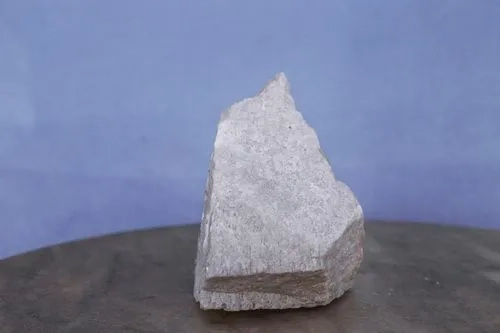The Hardness of White Corundum
Hardness, in the context of minerals, refers to a material's resistance to permanent scratching by another substance. The Mohs scale, a qualitative system developed by German mineralogist Friedrich Mohs in 1812, is the most widely used method for measuring a mineral's hardness. This scale ranks minerals from 1 (talc, the softest) to 10 (diamond, the hardest). On this scale, white corundum falls at a staggering 9, making it exceptionally hard to scratch and a valuable industrial material.
Methods for Measuring Hardness
While the Mohs scale provides a basic framework for hardness comparison, it doesn't offer precise numerical values. For more quantitative analysis, other techniques are employed: Scratch Hardness Testing: This method involves using a series of standardized minerals with known Mohs hardness values to attempt to scratch the test material. The point at which a mineral on the scale can scratch the test material indicates its relative hardness. Knoop Hardness Testing: This technique utilizes a diamond indenter to create a microscopic indentation on the material's surface. The depth and shape of the indentation are then measured to determine the material's resistance to deformation, thus providing a more precise hardness value. When it comes to white corundum, both Mohs scale testing and Knoop hardness testing confirm its exceptional hardness, placing it just below diamond and moissanite on the scale of naturally occurring minerals.
Why is White Corundum So Hard?
The remarkable hardness of white corundum can be attributed to its unique atomic structure. Corundum is composed primarily of aluminum oxide (Al2O3), where aluminum ions are tightly packed in a trigonal crystal lattice. Within this lattice, each aluminum ion is surrounded by six oxygen ions, forming strong covalent bonds. These covalent bonds require a significant amount of energy to break, making it very difficult for other materials to scratch or penetrate the corundum structure. Furthermore, the arrangement of aluminum and oxygen ions within the crystal lattice creates a very rigid structure. The strong electrostatic forces between these ions prevent the atoms from easily shifting out of their positions, further contributing to the material's exceptional hardness.
Applications that Leverage White Corundum's Hardness
White corundum is formed through the process of high-temperature fusion of alumina in an electric arc furnace. The controlled melting and cooling of alumina result in the formation of white corundum crystals with a high degree of purity. It exhibits excellent chemical stability, high melting point, and remarkable hardness, making it suitable for a wide range of industrial applications. Based on the hardness of white corundum, it can be used for the following applications: Abrasives: White corundum, crushed and sized into various grits, is a key component in many abrasive products like sandpaper, grinding wheels, and polishing compounds. Its hardness allows it to effectively remove material from surfaces like metal, wood, and stone. Refractory Materials: Due to its high melting point and resistance to wear and tear, white corundum is a valuable material for lining furnaces and crucibles used in high-temperature industrial processes. Its ability to withstand extreme heat without melting or deforming makes it ideal for these demanding applications. Gemstones: While not as well-known as its blue counterpart, sapphire, white corundum can be used to create colorless gemstones called white sapphires. These gemstones, prized for their brilliance and durability, are a popular choice for jewelry. Substrate for Coatings: The hardness and stability of white corundum make it a suitable substrate for applying various coatings. For example, it can be used as a base for thermal barrier coatings in jet engines or wear-resistant coatings on cutting tools.
Conclusion
White corundum stands out as a remarkable mineral boasting a hardness of 9 on the Mohs scale. This exceptional strength, a result of its unique atomic structure, has propelled white corundum to become a valuable industrial material with a wide range of applications.
